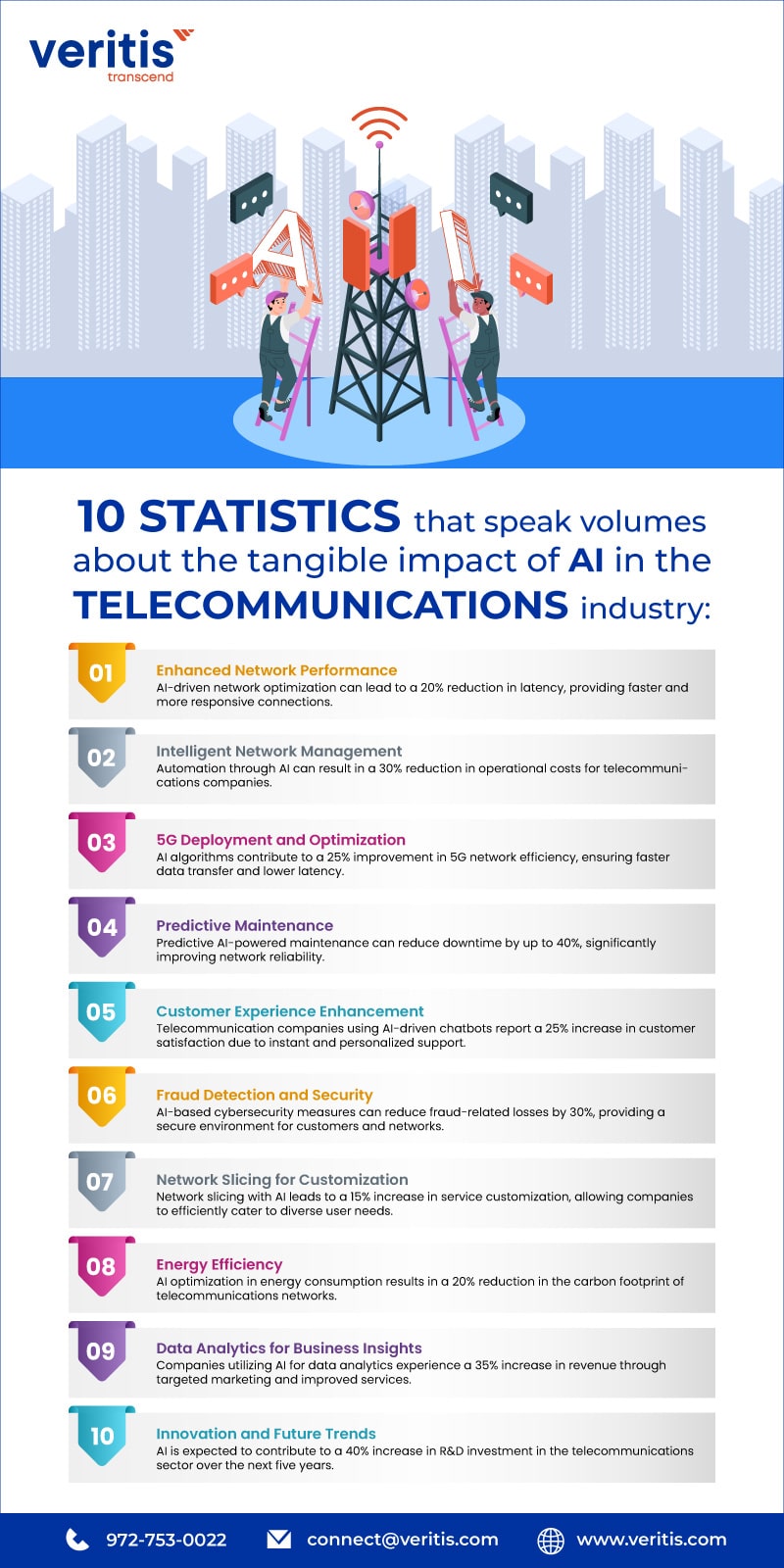In the domain of the telecommunications industry, the infusion of Artificial Intelligence (AI) has emerged as a transformative force, reshaping how connectivity is established and maintained. This statistical overview delves into the profound impact that AI has had on the telecommunications sector, unveiling a myriad of compelling insights backed by concrete numbers.
From optimizing network performance to revolutionizing customer experiences, the statistics presented herein illuminate the tangible contributions of AI, positioning it as an indispensable catalyst for innovation within the industry as we navigate through the data-driven fields of network management, 5G deployment, and beyond, the narrative unfolds, showcasing the real-world implications of AI in propelling the telecommunications industry into an era of unprecedented efficiency and customer-centricity.
10 Statistics That Speak Volumes About the Tangible Impact of AI in the Telecommunications Industry:

Email-us: connect@veritis.com; Call: 972-753-0022
10 Key Metrics Illustrating the Substantive Influence of AI in the Telecommunications Sector
1) Enhanced Network Performance
AI-driven network optimization can lead to a 20% reduction in latency, providing faster and more responsive connections.
2) Intelligent Network Management
Automation through AI can result in a 30% reduction in operational costs for telecommunications companies.
3) 5G Deployment and Optimization
AI algorithms contribute to a 25% improvement in 5G network efficiency, ensuring faster data transfer and lower latency.
4) Predictive Maintenance
Predictive AI-powered maintenance can reduce downtime by up to 40%, significantly improving network reliability.
5) Customer Experience Enhancement
Telecommunication companies using AI-driven chatbots report a 25% increase in customer satisfaction due to instant and personalized support.
6) Fraud Detection and Security
AI-based cybersecurity measures can reduce fraud-related losses by 30%, providing a secure environment for customers and networks.
7) Network Slicing for Customization
Network slicing with AI leads to a 15% increase in service customization, allowing companies to efficiently cater to diverse user needs.
8) Energy Efficiency
AI optimization in energy consumption results in a 20% reduction in the carbon footprint of telecommunications networks.
9) Data Analytics for Business Insights
Companies utilizing AI for data analytics experience a 35% increase in revenue through targeted marketing and improved services.
10) Innovation and Future Trends
AI is expected to contribute to a 40% increase in R&D investment in the telecommunications sector over the next five years.
Conclusion:
The statistics underscore AI’s transformative role, from reducing downtime to enhancing energy efficiency. As the telecommunications sector continues its innovation trajectory, AI is the driving force behind a future characterized by efficiency, customization, and unparalleled connectivity.
Got Questions? Schedule A Call
Additional Resources:
- Impact of AI in Telecommunications Industry
- 7 Essential AI Tools Every CTO Should Be Familiar With
- AI and Cybersecurity: Defending Against Evolving Threats
- Overcoming Challenges: Implementing Generative AI in Healthcare
- Top Impediments Which Bog Down Digital Transformation
- How AI Adoption Will Transform Your Business
- AIOps Use Cases: How Artificial Intelligence is Reshaping IT Management

